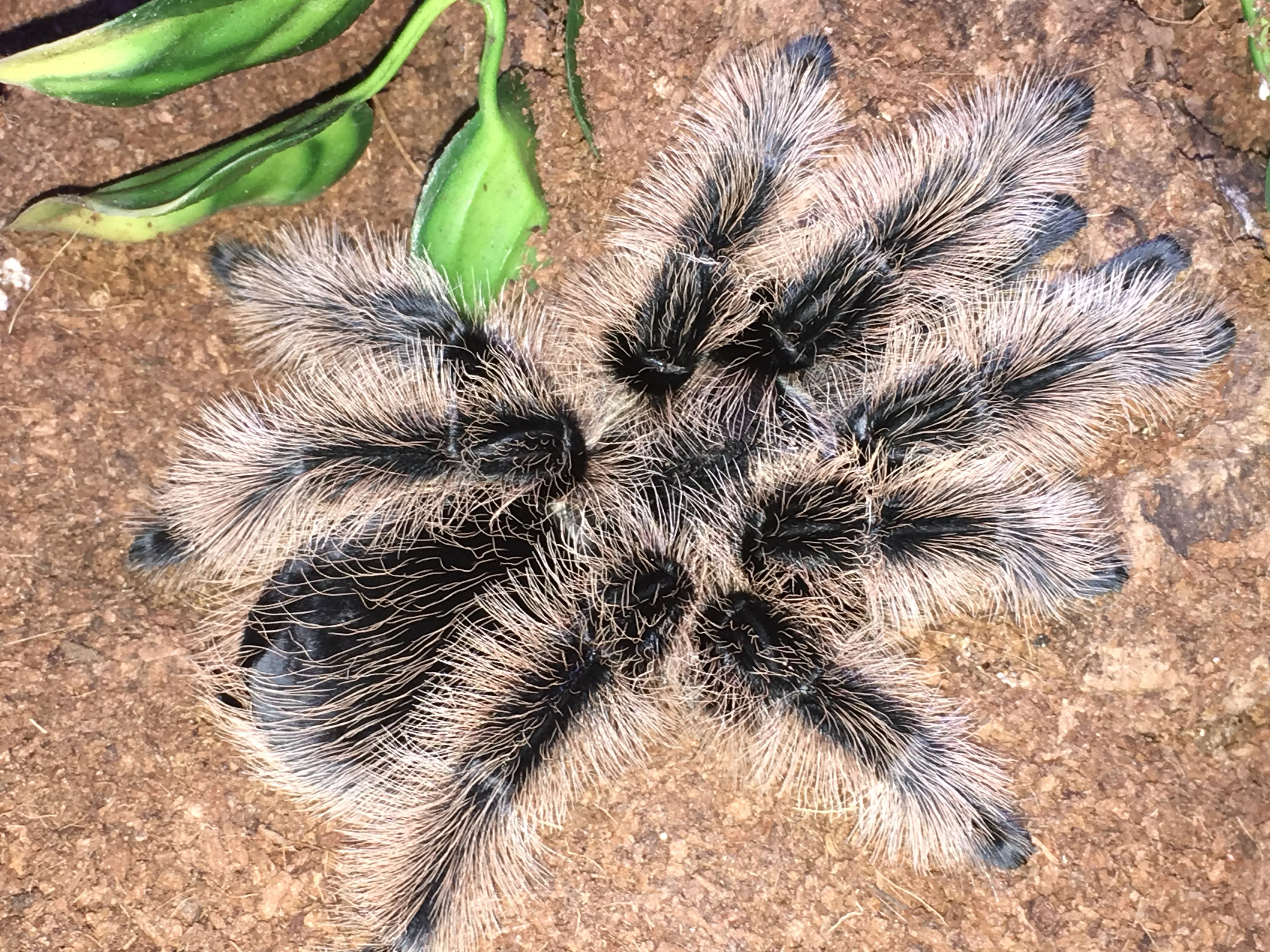Understanding the Curly Hair Tarantula
The Curly Hair Tarantula ( Tliltocatl albopilosus ), is a popular choice for both beginner and experienced tarantula keepers. Known for its docile temperament and striking appearance, this species is a relatively low-maintenance pet. Native to the tropical regions of Central America, particularly Costa Rica, the Curly Hair Tarantula is a terrestrial species, meaning it spends most of its time on the ground. Their popularity stems from their manageable size, ease of care, and unique appearance characterized by a covering of brown hairs that give the spider a fuzzy, almost curly, look. Understanding the basics of their natural habitat, appearance, and behavior is crucial to providing proper care and ensuring a healthy, happy tarantula.
Origin and Habitat of the Curly Hair Tarantula
Curly Hair Tarantulas are native to the humid, tropical environments of Central America. Specifically, they are commonly found in Costa Rica. In their natural habitat, these tarantulas live in burrows or under the cover of leaf litter and rocks. The climate in these regions is consistently warm and humid, which is essential for their survival. They are well-adapted to this environment, where they hunt for insects and other small invertebrates. Replicating these environmental conditions is key to their well-being in captivity, ensuring the tarantula thrives. The correct habitat helps the spider to molt successfully and maintain its overall health, so it’s essential to understand their natural needs.
Appearance and Characteristics
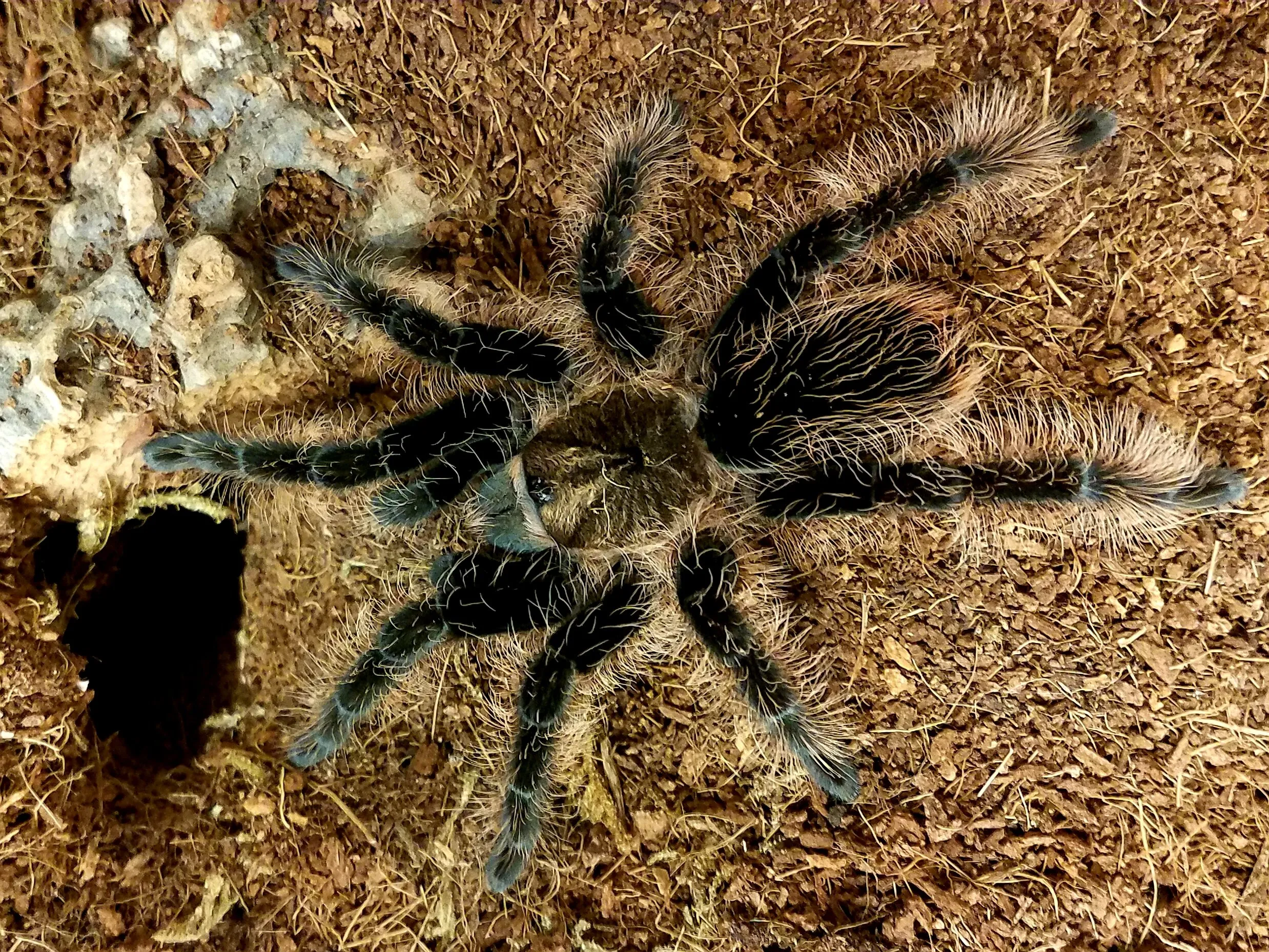
The Curly Hair Tarantula is easily recognizable by its distinctive appearance. The body is typically dark brown or black, covered in numerous hairs that have a curly appearance, particularly on the legs and abdomen. These hairs give the spider its common name. They are a relatively medium-sized tarantula, with a leg span that can reach up to 5–6 inches. They are generally docile and known for their calm temperament, making them suitable pets for beginners. Their lifespan can range from 10 to 15 years for females, while males typically live for a shorter period. The color and density of the hairs can vary slightly from one individual to another, and the coloration will be most vibrant after a molt.
Top 5 Care Tips for Your Curly Hair Tarantula!
Habitat Setup
Creating the right habitat is essential for your Curly Hair Tarantula’s well-being. This involves providing a suitable enclosure, appropriate substrate, and maintaining the correct temperature and humidity levels. Proper habitat setup not only ensures the tarantula’s comfort but also supports its natural behaviors, such as burrowing and hiding, which are essential for their psychological health. A well-designed enclosure helps the tarantula regulate its body temperature and stay hydrated, crucial factors for its survival. It is best to choose an enclosure that suits the tarantula’s size and provides enough space for movement and enrichment.
Enclosure Size and Type
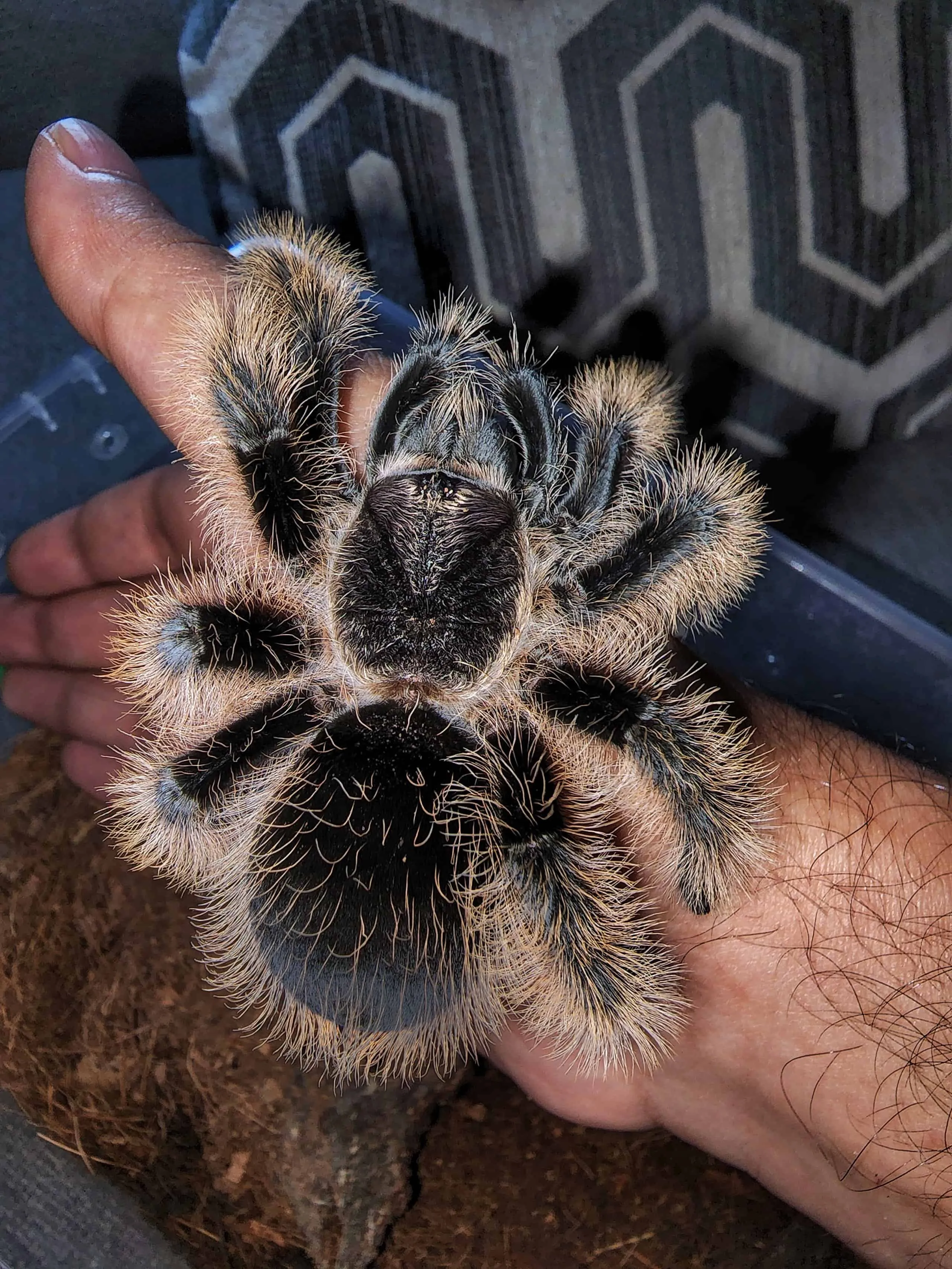
The enclosure should be appropriately sized for your tarantula. As a general rule, the enclosure should be at least three times the tarantula’s leg span in width. A 5-10 gallon terrarium is usually sufficient for an adult Curly Hair Tarantula. Avoid enclosures that are too tall, as a fall from a significant height can injure the spider. Ensure the enclosure has a secure lid to prevent escapes. Glass or acrylic tanks are suitable, providing good visibility and ease of cleaning. Make sure that the enclosure also has adequate ventilation to prevent the buildup of excess humidity.
Substrate and Decor
The substrate should be deep enough to allow the tarantula to burrow if it chooses. A mix of coconut fiber, peat moss, and a small amount of vermiculite is ideal. This substrate mix holds moisture well while allowing good ventilation, which helps maintain appropriate humidity levels. Provide about 4–6 inches of substrate. Add some hiding places, such as a cork bark or a small cave, to provide security. You can also add a shallow water dish, which the tarantula will use for drinking. Ensure that any decorations are non-toxic and safe for the tarantula.
Temperature and Humidity
Maintain a temperature between 75–85°F (24–29°C). You can use a heat mat or a ceramic heat emitter, but make sure it’s regulated with a thermostat to prevent overheating. The humidity level should be around 65–75%. You can monitor this using a hygrometer. To maintain humidity, lightly mist the substrate with dechlorinated water a couple of times a week. Avoid over-misting, as this can lead to mold growth. Proper temperature and humidity are essential for the tarantula’s health, moulting process, and overall well-being. You can use a thermometer to ensure the temperature is within the correct range.
Feeding Your Tarantula
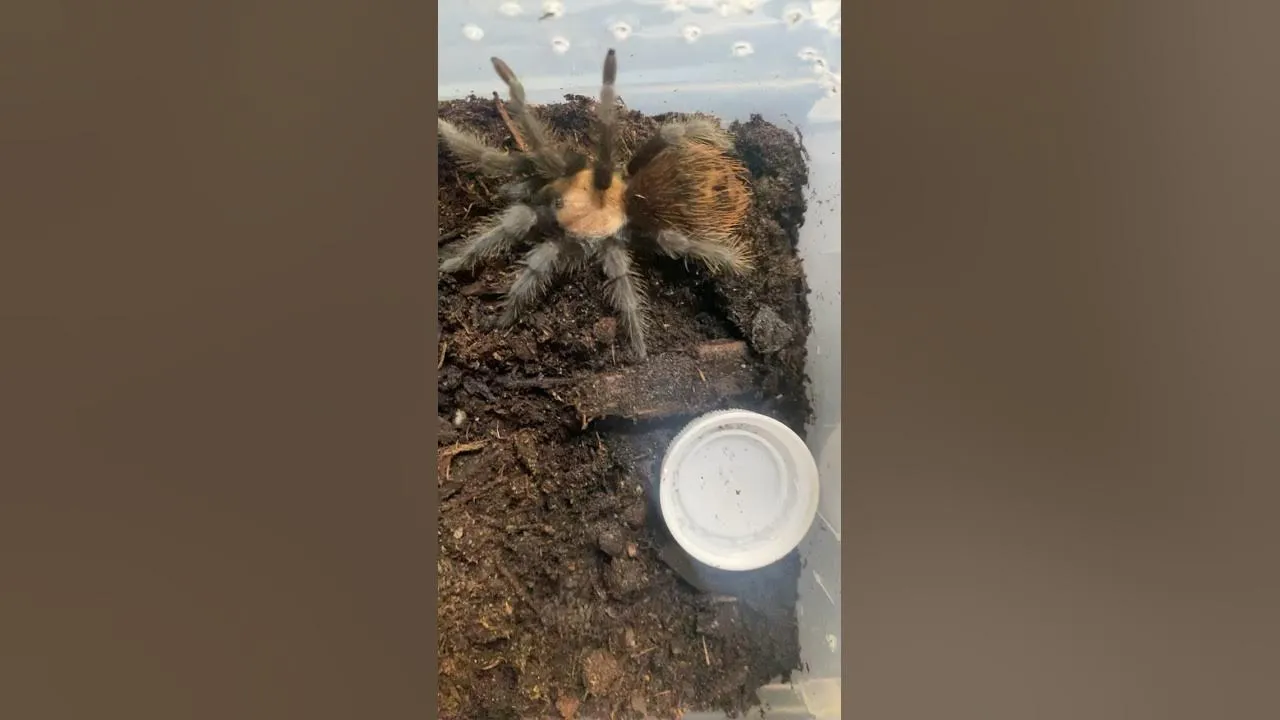
Feeding your Curly Hair Tarantula is a straightforward process, but it is essential to follow the right guidelines to ensure the tarantula’s health and vitality. Tarantulas are carnivores and primarily feed on insects. The diet should be varied to provide the necessary nutrients. The size of the prey should be appropriate for the tarantula. It’s important not to overfeed the tarantula, as this can lead to obesity and health problems. The right feeding schedule keeps the tarantula healthy. It is best to offer food at the right time of the day so the tarantula can maintain its natural habits.
What to Feed
The primary diet should consist of insects such as crickets, mealworms, roaches, and grasshoppers. Offer a variety to provide a balanced diet. The size of the insects should be roughly the same size as the tarantula’s body or slightly smaller. Always remove any uneaten food within 24 hours to prevent mold growth. You can also supplement the diet with occasional pre-killed pinky mice for adult tarantulas, but this should be done sparingly. Ensure the insects are gut-loaded before feeding, which means feeding them nutritious food so that they are enriched with vitamins and minerals that the tarantula can then absorb. Avoid feeding insects that may have been exposed to pesticides.
Feeding Frequency
Juvenile tarantulas should be fed more frequently, about two to three times a week. Adult tarantulas can be fed less often, usually once a week or every other week. Adjust the feeding frequency based on the tarantula’s appetite and body condition. If the tarantula is not eating, it could be a sign of an impending molt. Always provide fresh, clean water in a shallow dish, and make sure the water dish is accessible. Observe your tarantula’s behavior, as a loss of appetite may indicate that it is ready to molt. Adjust the feeding schedule to meet the specific needs of your tarantula to prevent overfeeding.
Watering and Hydration
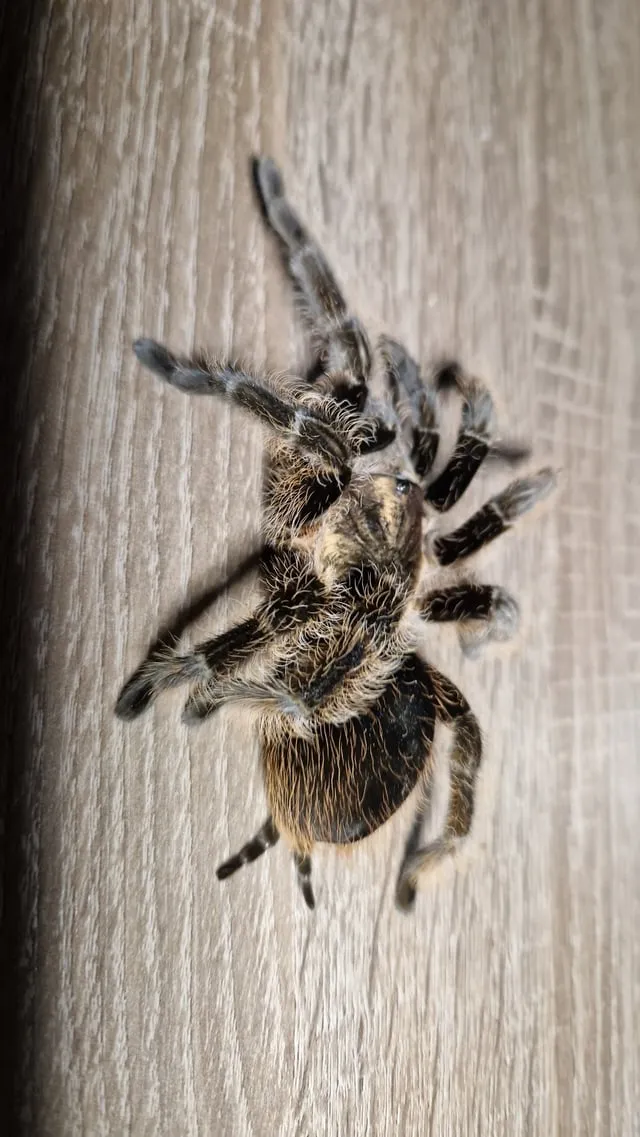
Providing fresh water is essential for your Curly Hair Tarantula. Always have a shallow water dish in the enclosure, filled with clean, dechlorinated water. The water should be shallow enough to prevent the tarantula from drowning. You can use a cotton ball or a sponge in the water dish to prevent the tarantula from falling in and to provide a place to drink. Regularly change the water to keep it clean. In addition to the water dish, misting the enclosure lightly a couple of times a week can help maintain humidity. Proper hydration supports the tarantula’s health, moulting, and overall well-being.
Handling and Interaction
While Curly Hair Tarantulas are generally docile, handling should be done with care and only if the tarantula is comfortable. Avoid handling if the tarantula shows signs of stress, such as raising its front legs or flicking hairs. When handling, do so close to the ground or over a soft surface to minimize the risk of injury if the tarantula falls. Handle the tarantula gently and avoid sudden movements. Some tarantulas may not be comfortable being handled at all. If you’re a beginner, observing the tarantula in its enclosure is often the best way to interact with it. Always wash your hands before and after handling. If the tarantula bites, seek medical attention as a precaution due to potential allergens.
Health and Common Issues
Like all pets, Curly Hair Tarantulas can experience health problems. Knowing the signs of a healthy tarantula and how to identify and address common issues is essential for their care. Regular observation is crucial to detect any changes in behavior or appearance. Maintaining proper husbandry practices, such as providing the correct temperature, humidity, and diet, can prevent many health problems. Being aware of the common health issues and knowing when to seek professional help can help ensure the tarantula’s longevity and well-being.
Moulting Process
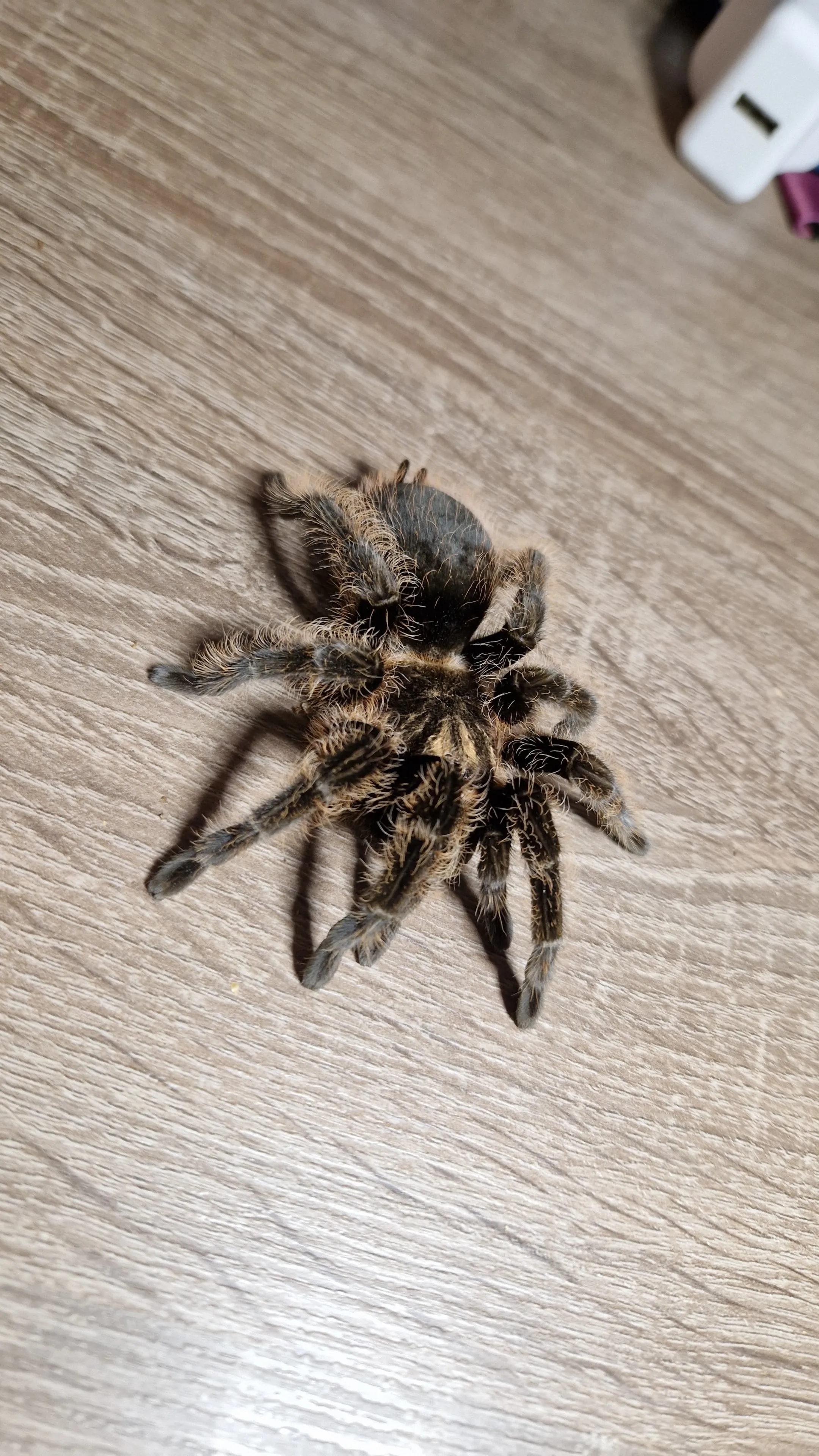
Moulting is a natural process where the tarantula sheds its exoskeleton to grow. During this time, the tarantula will usually stop eating and may appear sluggish. It might flip onto its back, which is a normal behavior. Do not disturb the tarantula during moulting. Provide a humid environment and ensure the tarantula has access to water. Once the moult is complete, the tarantula’s new exoskeleton will be soft and vulnerable. Avoid handling the tarantula for at least a week after moulting. The new exoskeleton will harden over time. Dispose of the old exoskeleton.
Identifying and Addressing Health Problems
Look for signs of illness, such as lethargy, loss of appetite, or unusual behavior. Check for mites, which can be detected as small, moving dots on the tarantula or its enclosure. If you suspect mites, isolate the tarantula and clean the enclosure. Mites can be treated with products designed for reptiles and arachnids. Other issues to watch out for include injuries, such as damaged legs or fangs. These injuries should be addressed promptly. If you notice any serious health problems, consult a veterinarian specializing in exotic animals. Ensure that the enclosure is always kept clean. Provide the correct humidity and temperature, and feed the tarantula a balanced diet to keep it healthy.
Conclusion
Caring for a Curly Hair Tarantula can be a rewarding experience. By understanding their needs, providing a suitable habitat, and following proper care guidelines, you can ensure that your tarantula lives a long, healthy, and fulfilling life. Remember to research thoroughly before acquiring a tarantula and be prepared to provide the necessary care. The key is to observe your tarantula, learn its behavior, and adjust your care routine accordingly. With proper care, your Curly Hair Tarantula will become a fascinating and enjoyable pet. Enjoy the unique experience of keeping one of these beautiful arachnids!
